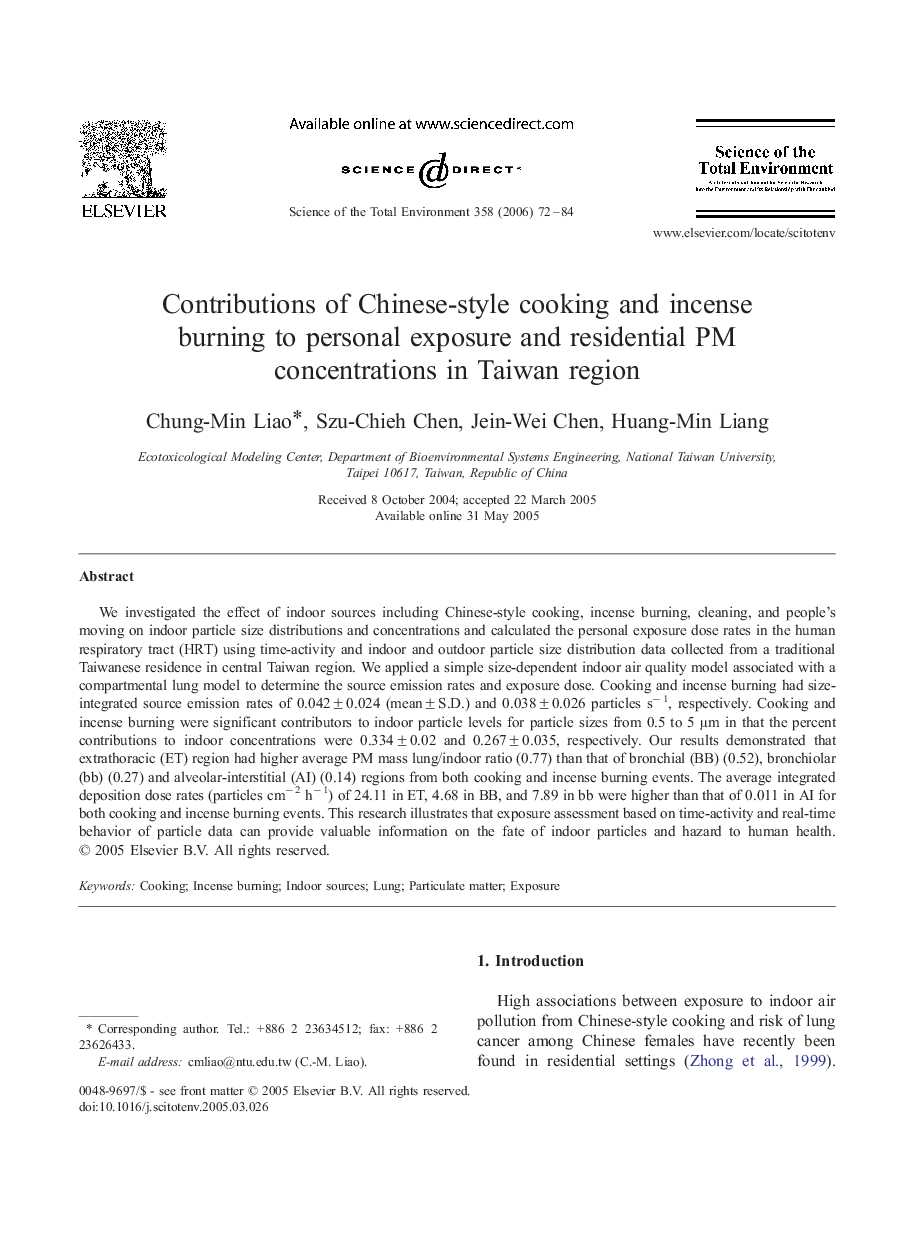| Article ID | Journal | Published Year | Pages | File Type |
|---|---|---|---|---|
| 4434406 | Science of The Total Environment | 2006 | 13 Pages |
We investigated the effect of indoor sources including Chinese-style cooking, incense burning, cleaning, and people's moving on indoor particle size distributions and concentrations and calculated the personal exposure dose rates in the human respiratory tract (HRT) using time-activity and indoor and outdoor particle size distribution data collected from a traditional Taiwanese residence in central Taiwan region. We applied a simple size-dependent indoor air quality model associated with a compartmental lung model to determine the source emission rates and exposure dose. Cooking and incense burning had size-integrated source emission rates of 0.042 ± 0.024 (mean ± S.D.) and 0.038 ± 0.026 particles s− 1, respectively. Cooking and incense burning were significant contributors to indoor particle levels for particle sizes from 0.5 to 5 μm in that the percent contributions to indoor concentrations were 0.334 ± 0.02 and 0.267 ± 0.035, respectively. Our results demonstrated that extrathoracic (ET) region had higher average PM mass lung/indoor ratio (0.77) than that of bronchial (BB) (0.52), bronchiolar (bb) (0.27) and alveolar-interstitial (AI) (0.14) regions from both cooking and incense burning events. The average integrated deposition dose rates (particles cm− 2 h− 1) of 24.11 in ET, 4.68 in BB, and 7.89 in bb were higher than that of 0.011 in AI for both cooking and incense burning events. This research illustrates that exposure assessment based on time-activity and real-time behavior of particle data can provide valuable information on the fate of indoor particles and hazard to human health.
